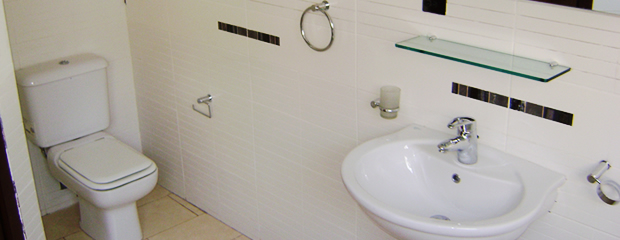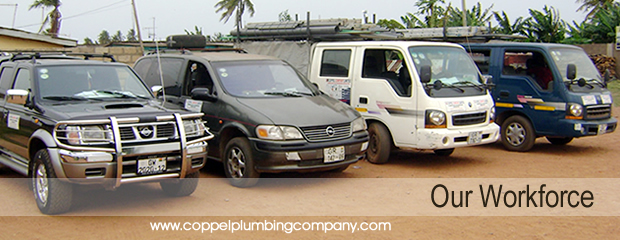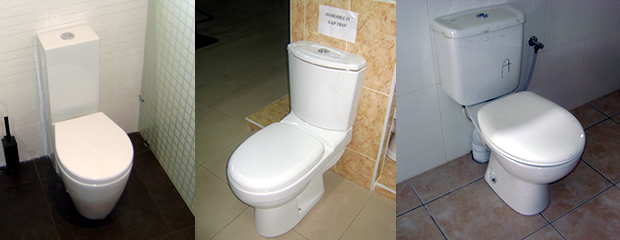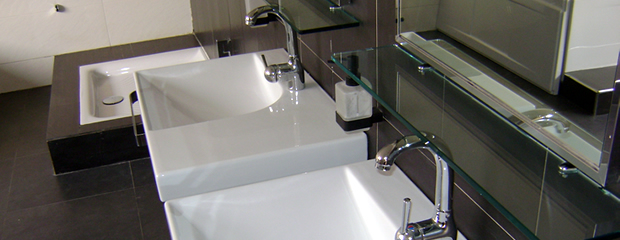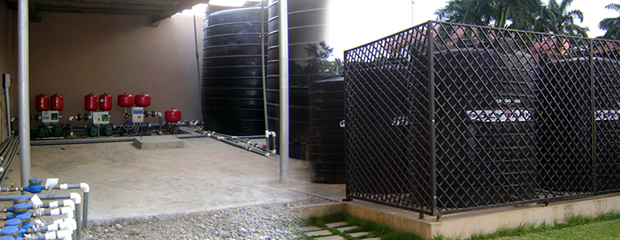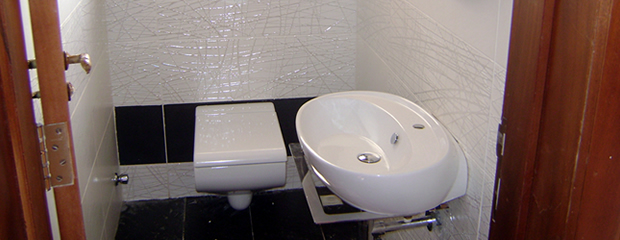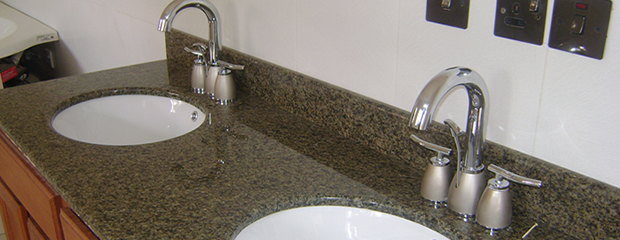| |
| |
| Equipment and tools |
| |
Plumbing equipment includes devices often hidden behind walls or in utility spaces which are not seen by the general public. It includes water meters, pumps, expansion tanks, backflow arrestors, water filters, UV sterilization lights, water softeners, water heaters, heat exchangers, gauges, and control systems.
Specialized plumbing tools include pipe wrenches, flaring pliers, and joining tools such as soldering torches and crimp tools.
New tools have been developed to help plumbers fix problems more efficiently. For example, plumbers use video cameras for inspections of hidden leaks or problems, they use hydro jets, and high pressure hydraulic pumps connected to steel cables for trench-less sewer line replacement.
|
|
| |
|
|
|
|
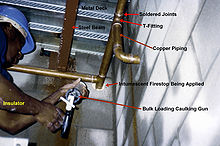 |
| Copper piping system in a building with intumescent firestop being installed by an insulator, Vancouver, Canada |
The major categories of plumbing systems or subsystems are:
* Potable cold and hot tap water supply
* Plumbing drainage venting
* Septic systems
* Rainwater, surface, and subsurface water drainage
* Fuel gas piping
For their environmental benefit and sizable energy savings, hot water heat recycling units are being installed in residential buildings. Ecological concerns and water shortages have increased interest in graywater recovery and treatment systems.
Plumbing may also include hydronics, which involves heating and cooling systems utilizing water to transport thermal energy. The New York City steam system is an example of a large district heating system. |
|
|
| Firestopping is required where mechanical penetrants traverse fire-resistance rated wall and floor assemblies, or membranes thereof. This work is usually done worldwide by the insulation trade and/or specialty firestop sub-contractors. |
|
|
 |
| Self-levelling silicone firestop installation in mechanical service penetration in 2 hour rated concrete floor |
Much of the plumbing work in populated areas is regulated by government or quasi-government agencies due to the direct impact on the public's health, safety, and welfare. Plumbing installation and repair work on residences and other buildings generally must be done according to plumbing and building codes to protect the inhabitants of the buildings and to ensure safe, quality construction to future buyers. If permits are required for work, plumbing contractors typically secure them from the authorities on behalf of home or building owners.
In the United Kingdom the professional body is the Chartered Institute of Plumbing and Heating Engineering (educational charity status) and it is true that the trade still remains virtually ungoverned; there are no systems in place to monitor or control the activities of unqualified plumbers or those home owners who choose to undertake installation and maintenance works themselves, despite the health and safety issues which arise from such works when they are undertaken incorrectly; see Health Aspects of Plumbing (HAP) published jointly by the World Health Organization (WHO) and the World Plumbing Council (WPC).
WPC has subsequently appointed a representative to the World Health Organization to take forward various projects related to Health Aspects of Plumbing. |
|
| |
|
|
| |
